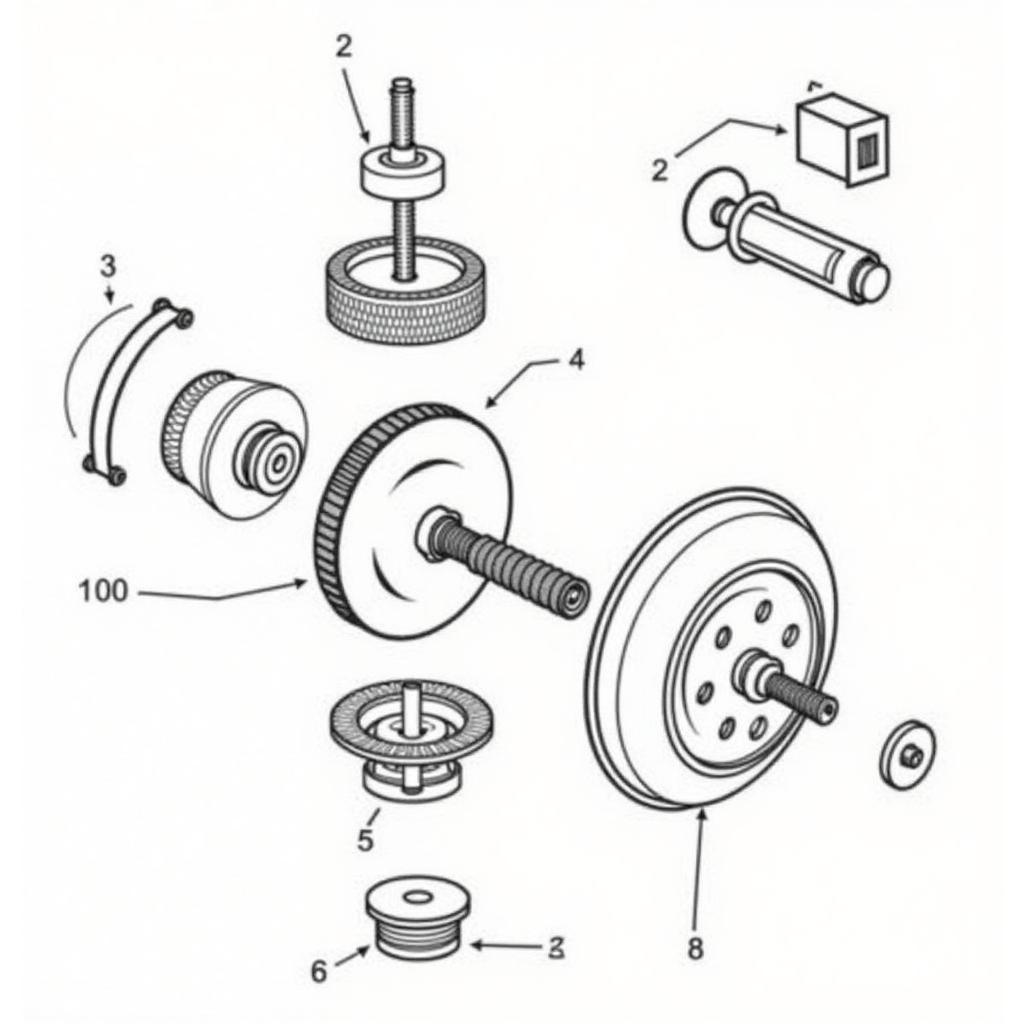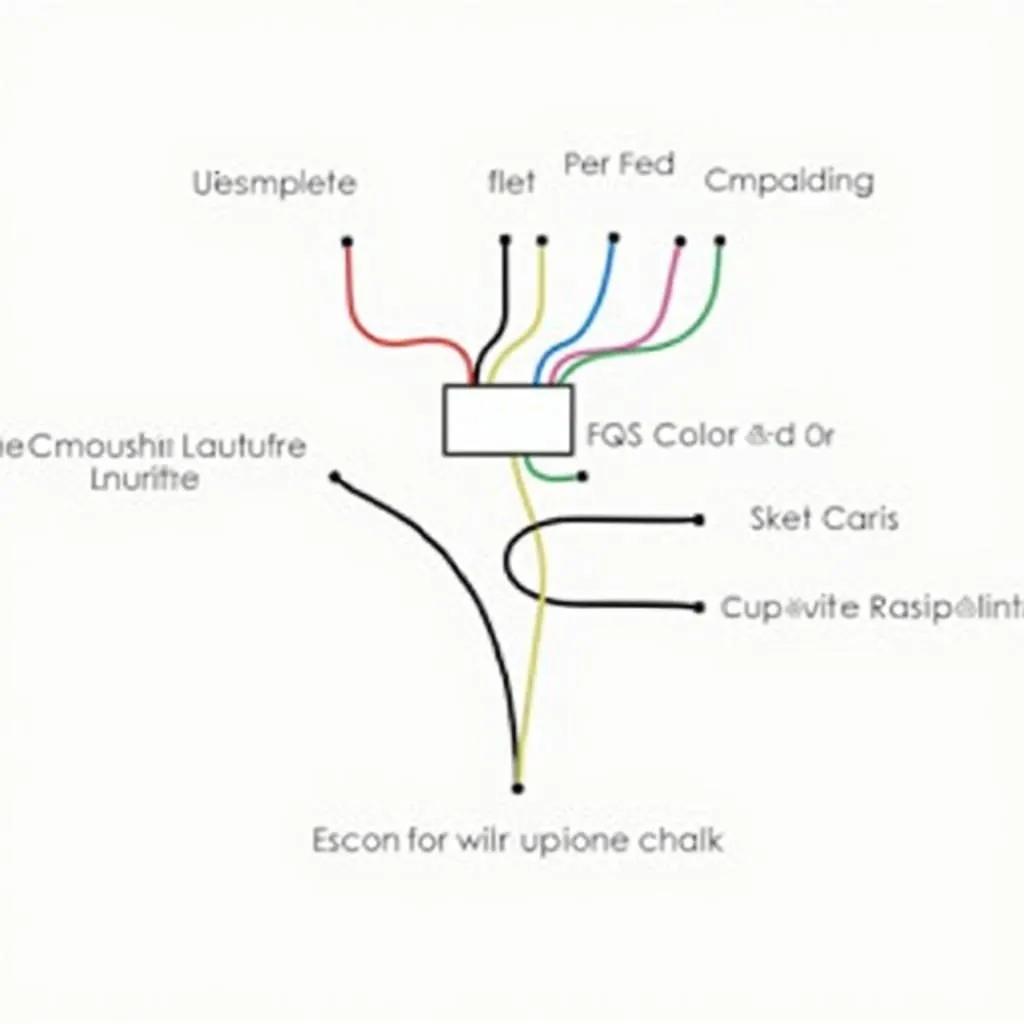The dreaded “service brake assist” warning can be a jarring sight for any driver. This warning light, often accompanied by an audible chime, signals a potential problem with your vehicle’s brake assist system – a crucial safety feature designed to help you stop quickly in emergency situations. Understanding what this warning means and how to address it is vital for your safety and the proper functioning of your vehicle.
What Does “Service Brake Assist” Mean?
The service brake assist warning light indicates a fault within the brake assist system. This system supplements your braking effort, providing extra power to the brakes when it senses a sudden stop. This is especially helpful in panic braking situations where you might not apply enough force to stop effectively. A malfunctioning brake assist system could mean you won’t have this crucial support when you need it most.
Common Causes of the Service Brake Assist Warning
Several issues can trigger the service brake assist warning. These range from simple fixes to more complex problems requiring professional attention. Some common culprits include:
- Low brake fluid: Brake assist systems rely on hydraulic pressure, and low brake fluid can impair their function.
- Faulty brake light switch: The brake light switch not only activates your brake lights but also signals the brake assist system. A malfunctioning switch can confuse the system and trigger the warning.
- ABS module issues: The Anti-lock Braking System (ABS) module is often integrated with the brake assist system. Problems with the ABS module can affect brake assist functionality.
- Wiring problems: Damaged or corroded wiring within the brake system can disrupt communication and trigger the warning light.
- Faulty brake assist sensor: The brake assist system uses sensors to detect rapid braking. A malfunctioning sensor can lead to false warnings or prevent the system from activating when needed.
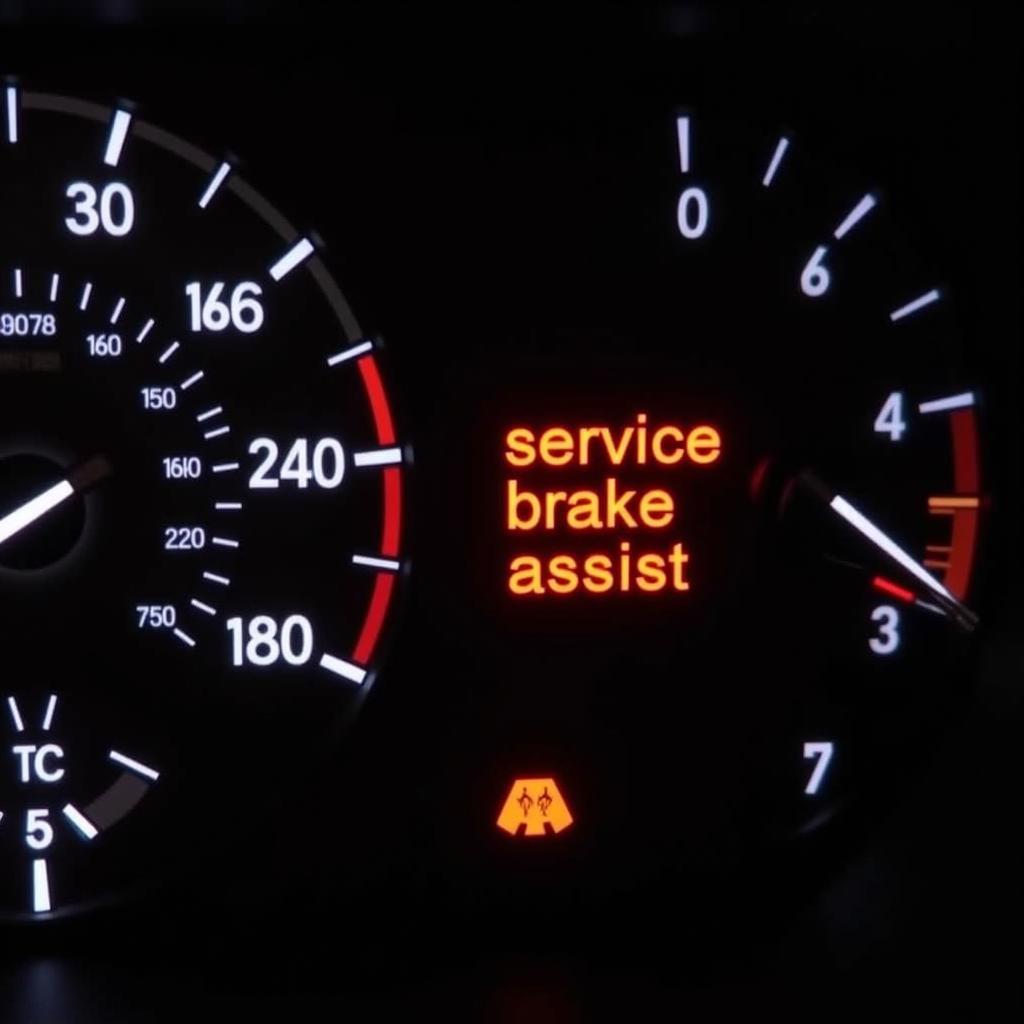 Dashboard Display Showing Service Brake Assist Warning Light
Dashboard Display Showing Service Brake Assist Warning Light
Diagnosing the Problem: From Simple Checks to Professional Help
Before rushing to the mechanic, there are a few simple checks you can perform yourself:
-
Check your brake fluid level: Open your vehicle’s hood and locate the brake fluid reservoir. Ensure the fluid level is within the recommended range. If it’s low, top it off with the correct brake fluid type.
-
Inspect your brake lights: Have a friend or family member help you verify that all your brake lights are working correctly. If not, the brake light switch might be the issue.
If these checks don’t resolve the issue, it’s time to seek professional help. A qualified technician can use diagnostic tools to pinpoint the exact cause of the problem.
Remote Diagnostics and Software Solutions: The Future of Car Repair
Modern vehicles are increasingly reliant on software and electronics. This opens up new possibilities for remote diagnostics and software-based repairs. Specialized services can access your vehicle’s computer system remotely, diagnose the problem, and even install software updates to fix certain issues, including those related to the brake assist system.
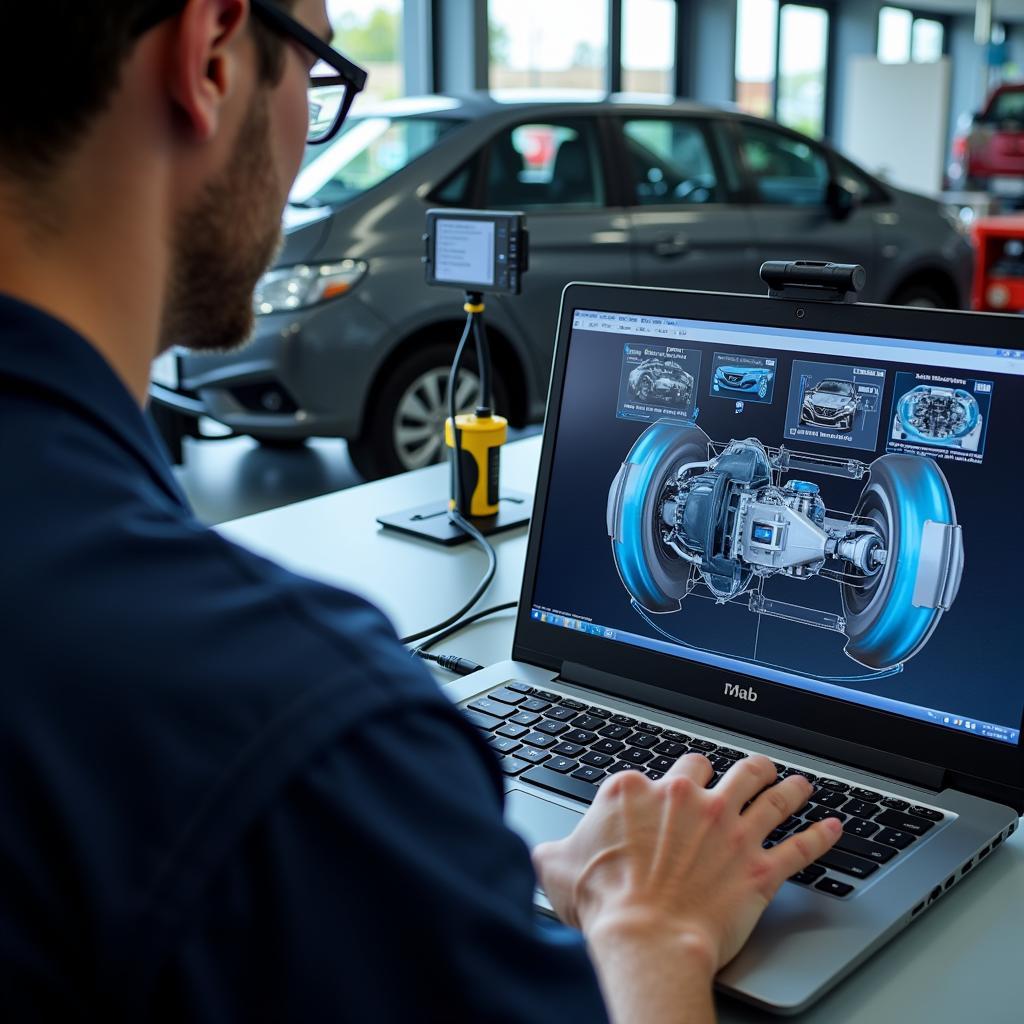 Technician Performing Remote Diagnostics and Software Repair
Technician Performing Remote Diagnostics and Software Repair
“Remote diagnostics are changing the game,” says John Smith, Lead Automotive Diagnostic Engineer at Advanced Auto Solutions. “We can now identify and fix many issues without the car ever needing to come into the shop. This saves time and money for our customers.”
Fixing the Service Brake Assist Warning: What to Expect
Depending on the underlying cause, fixing the service brake assist warning can involve anything from a simple fluid top-up to more complex repairs like replacing the ABS module or repairing wiring harnesses.
What if I Ignore the Warning?
Ignoring the service brake assist warning is highly discouraged. While you might still be able to brake normally, you’ll be without the added assistance in emergency situations. This could significantly increase your stopping distance and increase the risk of an accident.
“Driving with a faulty brake assist system is like driving without a safety net,” warns Maria Garcia, Senior Automotive Safety Consultant at SafeDrive Technologies. “You might not need it every day, but when you do, it can be the difference between a close call and a serious collision.”
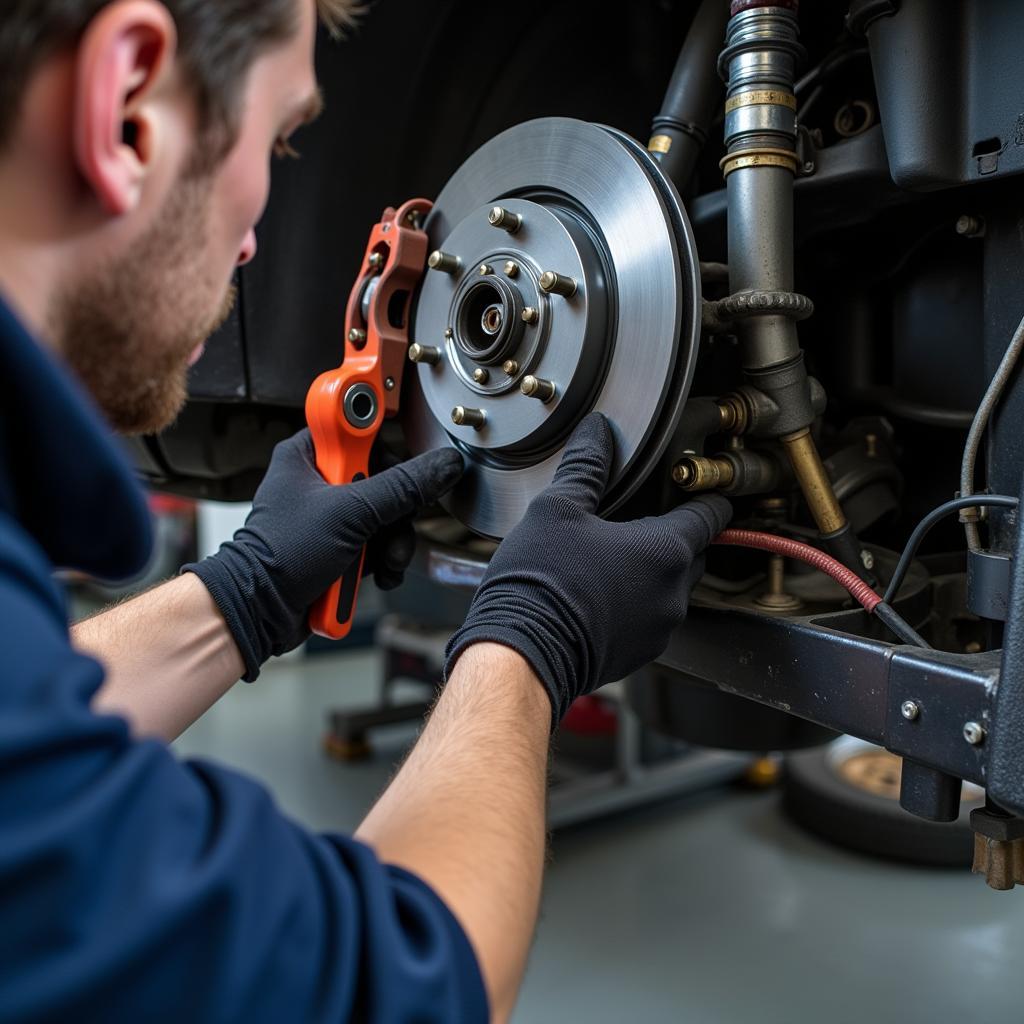 Mechanic Repairing a Vehicle's Brake System
Mechanic Repairing a Vehicle's Brake System
Conclusion
The service brake assist warning is a serious indicator that shouldn’t be ignored. Understanding its potential causes and taking prompt action to diagnose and fix the problem is essential for ensuring your safety and the proper functioning of your vehicle. Don’t hesitate to seek professional help if needed, and explore the benefits of remote diagnostics and software solutions for a quicker and more convenient repair experience.
FAQ
- Is it safe to drive with the service brake assist warning on? While you may still be able to brake, it’s not recommended to drive with this warning on. You’ll be without crucial assistance in emergency braking situations.
- How much does it cost to fix the service brake assist? The cost depends on the underlying cause and can range from a few dollars for a fluid top-up to several hundred dollars for more complex repairs.
- Can I fix the service brake assist myself? Simple checks like topping off brake fluid can be done DIY. However, more complex issues require professional expertise and diagnostic equipment.
- How long does it take to fix the service brake assist? The repair time varies depending on the problem and can range from a few minutes to several hours.
- What is the difference between brake assist and ABS? While they work together, they are different systems. ABS prevents wheel lockup during hard braking, while brake assist provides extra braking power in emergency situations.
- Can remote diagnostics fix the service brake assist warning? In some cases, yes. Software updates and certain resets can be performed remotely, but physical repairs still require hands-on work.
- How often should I check my brake fluid level? It’s a good practice to check your brake fluid level at least once a month and before any long trips.

